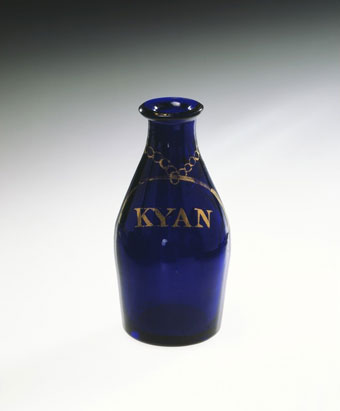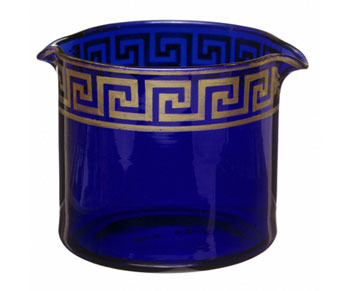|
|

Bristol was once famous for its glassmaking and by the end of the eighteenth century there were 14 glassworks active in the city.
Bristol was well-situated for manufacturing
glass as it had ready access to coal from local pits to fuel the
furnaces and supplies of the necessary raw materials,
including sand, kelp, clay, limestone, red lead and fireclay, all
of which were locally available or could be imported via Bristol
docks.

Cruet bottle, 1700-1800 ((c) Victoria and Albert Museum).
Bristol is most closely associated with the manufacture of Bristol Blue Glass. The blue pigment that gives it its distinctive colour was derived from cobalt oxide, which was first imported into Bristol in the second half of the eighteenth century by the porcelain manufacturer William Cookworthy. It came from Saxony. Some of products made using the glass were gilded in gold. Because so little of the original blue glass has identification marks it is not always possible to say with certainty if it did actually originate in Bristol. 'Bristol Blue Glass' has become a generic term to cover all blue glass.

Bowl, c 1805 ((c) Victoria and Albert Museum).
The most celebrated glass designer and maker was Isaac Jacobs (1757-1835). His father Lazarus (c 1790-1796) started the Nonsuch Flint Glass Manufactory in Bristol in the 1780s. They were awarded a royal warrant to produce glass for the aristocracy but the firm went bankrupt in the 1820s. Companies currently making blue glass that are based in Bristol include Bristol Blue Glassworks Ltd and Bristol Blue Glass.
|
|
|
|